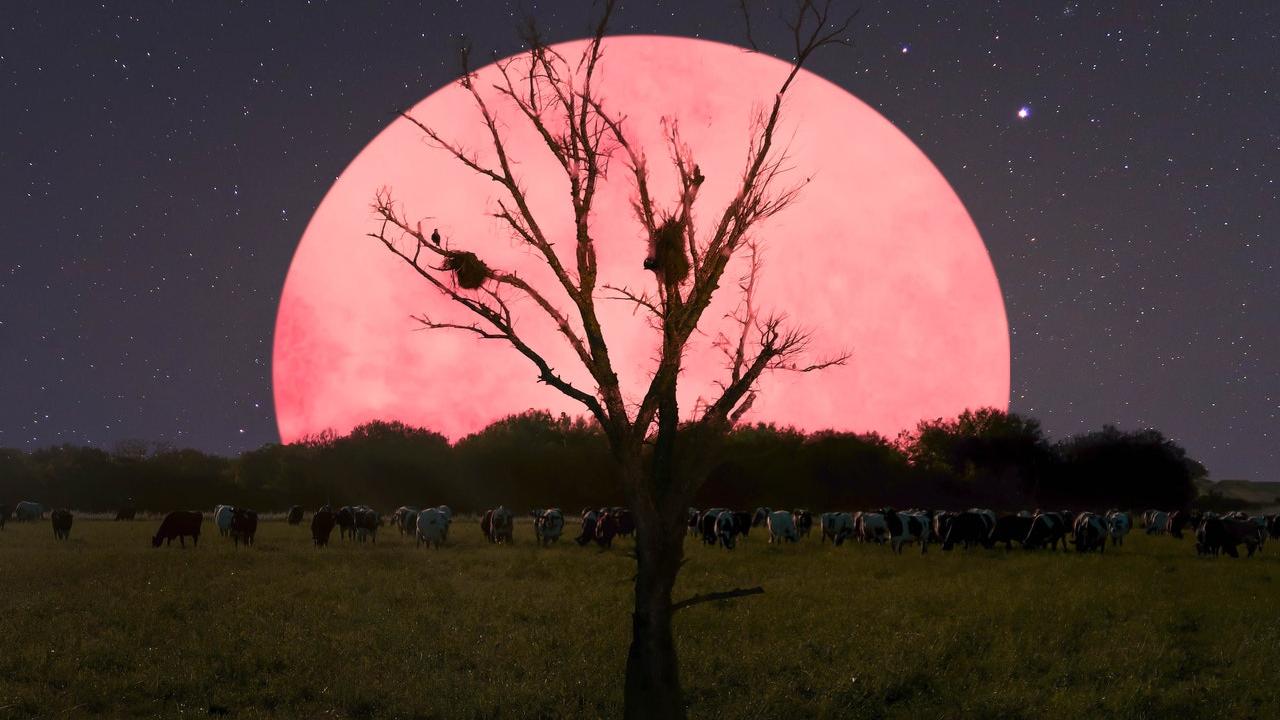
If you live in an urban area, you may want to drive to a place that isn’t littered with city lights to get the best view.įind an open area with a wide view of the sky.

Sunlight passing through Earth’s atmosphere lights the moon in a dramatic fashion, turning it red - which is why this is often referred to as a “blood moon.”ĭepending on the weather conditions in your area, it may be rusty, brick-colored or blood red.
#Super pink moom full
When the full moon moves into Earth’s shadow, it darkens, but it won’t disappear. The penumbra is the partial outer shadow, and the umbra is the full, dark shadow. Earth casts two shadows on the moon during the eclipse. Neither of the partial solar eclipses will be visible from North America.Ī lunar eclipse can occur only during a full moon when the sun, Earth and moon align, and the moon passes into Earth’s shadow. Another one on October 25 will be visible to those in Greenland, Iceland, Europe, northeastern Africa, the Middle East, western Asia, India and western China. Be sure to wear proper eclipse glasses to safely view solar eclipses, as the sun’s light can be damaging to the eye.Ī partial solar eclipse on April 30 can be seen by those in southern South America, the southeastern Pacific Ocean and the Antarctic peninsula. Partial solar eclipses occur when the moon passes in front of the sun but only blocks some of its light. There will be two total lunar eclipses and two partial solar eclipses in 2022, according to The Old Farmer’s Almanac. While these are the popularized names associated with the monthly full moons, the significance of each one may vary across Native American tribes. Here’s a list of the remaining moons for 2022, according to the Farmers’ Almanac: “But in some areas of the Midwest, people will see some below-average morning temperatures this weekend, which may leave them wishing for a pale moon.”Īfter the pink moon, there are eight full moon events still to come in 2022, with two of them qualifying as supermoons. There is also a chance of neither,” said CNN Meteorologist Judson Jones. “There certainly is a chance of rain or frost this weekend. If the full moon rises pale, expect rain.” According to The Old Farmer’s Almanac, “A full moon in April brings frost. However, it still comes with its own folklore. Unlike the last two years, this April’s pink moon will not be a supermoon. The pink moon is Bak Poya for Buddhists, especially in Sri Lanka, and commemorates Buddha’s visit to the island country, where Buddha prevented a war by settling a dispute between chiefs. For Hindus, this moon marks Hanuman Jayanti, the celebration of the Hindu monkey deity Lord Hanuman. It’s called the Paschal moon in the Christian ecclesiastical calendar, because it’s the full moon before Easter. "But that makes no sense to me," Dr Jacob says.The pink moon also aligns with several religious holidays, according to NASA.

The term was coined in 1979 to describe either a full moon or a new moon that occurs when the Moon is within 90 per cent of perigee. They're pretty common. There were three supermoons last year ( including a pink supermoon).Įxcept just how often they happen depends upon the definition you use, says astronomer Andrew Jacob of Sydney Observatory. When the full moon happens at same the time as it's closest to Earth, the effect is greater, but the difference between "perigean spring/king tides" and normal spring/king tides is only about 5 centimetres. ( ABC: Julie Ramsden)Īnd if you live near the coast and are really paying attention, you may also notice slightly higher than usual tides.ĭuring a full moon, the combined gravitational pull of the Moon and the Sun produces "spring" or "king" tides: higher high tides and lower low tides. A supermoon (closest to Earth) is only about 15 per cent bigger than a mini moon (furthest from Earth).


 0 kommentar(er)
0 kommentar(er)
